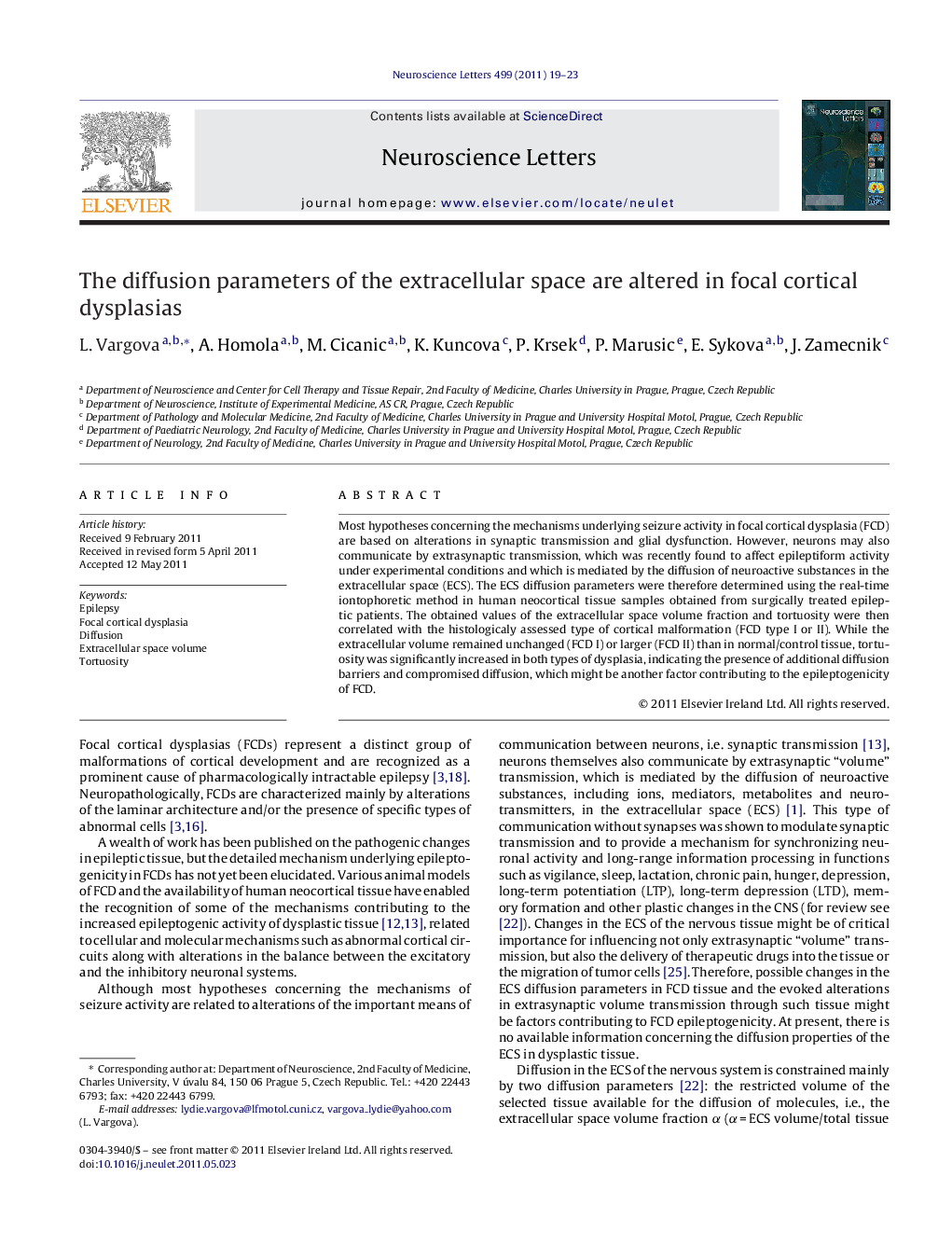| Article ID | Journal | Published Year | Pages | File Type |
|---|---|---|---|---|
| 4345174 | Neuroscience Letters | 2011 | 5 Pages |
Most hypotheses concerning the mechanisms underlying seizure activity in focal cortical dysplasia (FCD) are based on alterations in synaptic transmission and glial dysfunction. However, neurons may also communicate by extrasynaptic transmission, which was recently found to affect epileptiform activity under experimental conditions and which is mediated by the diffusion of neuroactive substances in the extracellular space (ECS). The ECS diffusion parameters were therefore determined using the real-time iontophoretic method in human neocortical tissue samples obtained from surgically treated epileptic patients. The obtained values of the extracellular space volume fraction and tortuosity were then correlated with the histologicaly assessed type of cortical malformation (FCD type I or II). While the extracellular volume remained unchanged (FCD I) or larger (FCD II) than in normal/control tissue, tortuosity was significantly increased in both types of dysplasia, indicating the presence of additional diffusion barriers and compromised diffusion, which might be another factor contributing to the epileptogenicity of FCD.
► Role of extracellular diffusion in epileptogenesis in human focal cortical dysplasias. ► Extracellular volume in dysplasias is unchanged or larger than in healthy tissue. ► Tortuosity is always higher in dysplastic tissue, i.e. diffusion is compromised. ► Slower diffusion is due to additional diffusion barriers. ► Slower diffusion of neuroactive substances may increase neuroactivity.
